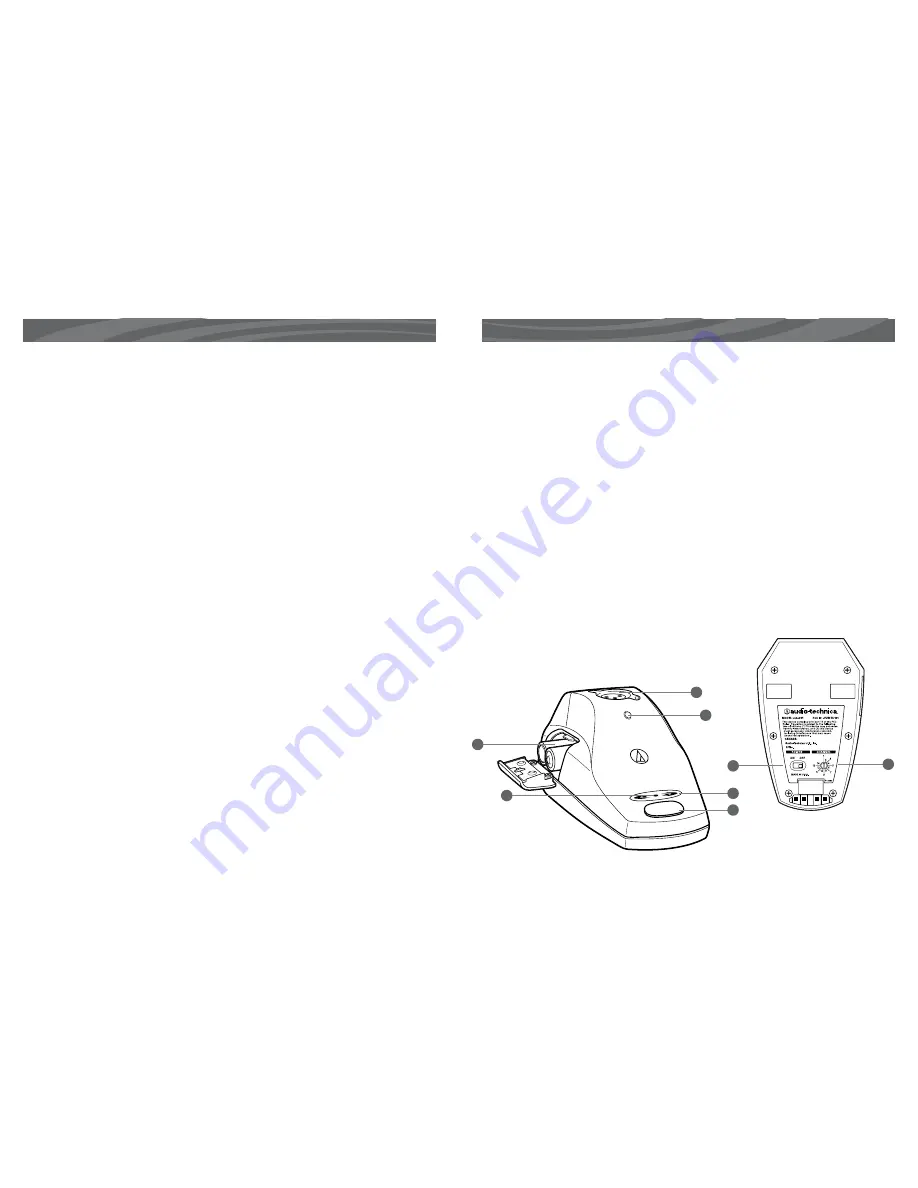
5. Power LED and Low-battery Warning
The Power LED on the top of the desk stand transmitter glows blue to indicate the
power is on.
When battery performance is low, the Power LED will blink as a warning. When the system
is linked, a bottom orange LED on the corresponding aci707 channel will illuminate to
provide additional indication of low-battery status.
6. Audio/Mute LED
When a desk stand transmitter’s audio is on, the elliptical Audio/Mute LEDs glow blue.
When the unit is muted, the LEDs are off. A red light on the corresponding aci707 channel
also indicates when audio is muted.
7. Link LED
The Link LED glows blue to indicate the desk stand transmitter is properly linked to the
system. (The top green light on the corresponding aci707 channel also lights.)
8. Soft-touch Button
A soft-touch button on the front face of the desk stand transmitter operates as a mute
(press on/off) switch or a control switch; to change mute status, depress the soft-touch
button. Choose the function of the button (Push-to-talk, Push-to-Mute, Toggle, and Off)
at the SpectraPulse
®
aci707 Audio Control Interface. (See
SpectraPulse
®
Owners Manual
for details.)
mtu201
XLR Desk Stand Transmitter Controls
1. Battery Selection and Installation
The mtu201 Wireless XLR Desk Stand Transmitter operates on two AA batteries
(standard alkaline or rechargeable). Please make certain that your batteries are fresh
or fully charged. Two AA 1.5V alkaline batteries are included with each desk stand
transmitter. SANYO rechargeable NiMH AA batteries (preferred for best battery-life
performance) are included with the optional cei007 Charging/Encryption Interface.
Note:
Other models of NiMH batteries may work, but the cei007 and the mtu201 are
optimized for use with SANYO NiMH AA batteries.
a Open the battery door by sliding the button down.
b. Insert two fresh or fully charged AA batteries into the battery compartment, being
careful to
observe correct polarity as marked on the inside of the door.
c. Close the battery door.
2. Channel Address Selection
Channel address selection is via a rotary switch on the bottom of each desk stand
transmitter. The switch is numbered for channel addresses 1 through 14; these channel
addresses correspond to the audio outputs on the aci707 unit. Use the provided screwdriver
to select a different channel address for each desk stand transmitter (you cannot have two
microphones on the same channel address). The Audio Control Interface (aci707) comes
from the factory set for channel addresses 1 through 7. If you wish to use it for channel
addresses 8 through 14, change the DIP switch on the back panel of the aci707 as described
in the
SpectraPulse
®
Owners Manual.
3. XLRF-type Connector
The mtu201 XLR Desk Stand Transmitter is equipped with a 3-pin XLRF-type connector
for connection to any Audio-Technica Engineered Sound
®
gooseneck microphone with
3-pin XLRM-type output.
4. Power On/Off
A slide switch on the bottom of each desk stand transmitter turns the unit on and off.
6
7
1
2
4
5
3
6
7
8























